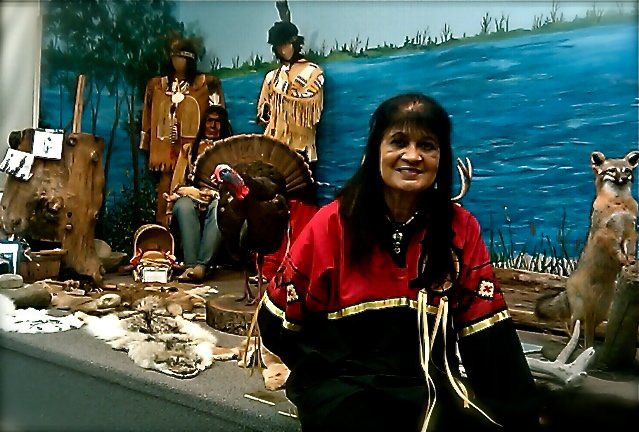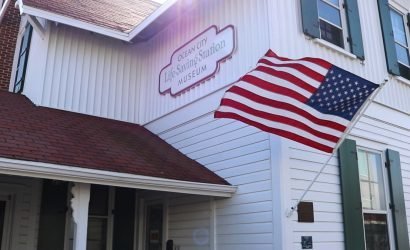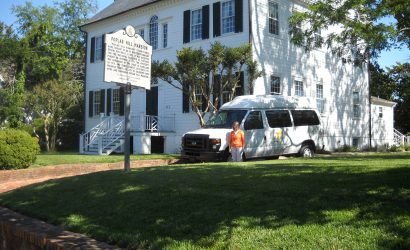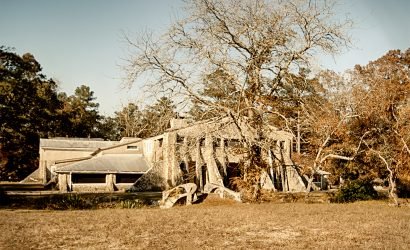As November draws to a close, Shorebread brings you one final article in honor of Native American Hertitage Month. This is a personal story, about what it's like to grow up as a member of the Nantocoke Indian Tribe on the Eastern Shore, in modern times.
June Harmon Robbins, also known by her Indian name, Morningstar—a name given to her by the Chief of the Nanticoke Indian Tribe during a traditional naming ceremony when she was a child, many years ago—is a beautiful woman. She still has jet-black hair and a youthful appearance well into her sixties. Her soft-spoken voice is the perfect narrative to tell the story of her people, the Nanticoke’s, once referred to as Delaware’s Forgotten Folk, by C. S. Weslager, the first person to write about the tribe in his book of the same name, in 1943. Morningstar doesn’t harbor any animosity for the hardships she faced – and there were many; instead her purpose is to teach and to remember, as she does here, explaining her people's culture while holding various artifacts.
“We are known as the Tidewater people. The turtle is our logo, and also our calendar, with each large space on the shell representing one of the thirteen moons, and each small space for one of the 28 days. It was used for harvesting and planting crops. We were hunters and fishermen, and lived in dome-shaped houses called wigwams. Men hunted animals like deer, rabbit, and turkey. Women stayed home and preserved the skins for dresses and dried out the meat for winter. Women also helped to plant and harvest crops. Women were the strength for the men; women were really at home preserving everything.”
Morningstar is a guide at the Nanticoke Museum in Millsboro, DE. She is used to explaining the old ways of her people, sharing the artifacts, back from when there were villages and the people were truly able to live off the land. But it is her stories of the more recent past that shed a light on the plight of her people in modern times.
“When I was a girl we used to go up to the town of Millsboro, to sell produce, but we weren’t allowed in the stores. We had to go around back, wait for the owner, and then leave.”
Her story is surprising. We often think of segregation in purely black and white terms—the racist treatment of African Americans as unequal, during a very dark period in our American history. The Native Americans were part of that period too, yet are often absent from that shared history.
Morningstar continues,
“Well the movies were segregated too. We didn’t have our own school, and we weren’t allowed to go to school with the whites.”
This changed when Levin Harmon, a Nanticoke, donated land to the state for a school to be built upon. The school itself was a two-room dwelling, (which is now used for the Nanticoke Museum), and was built by Mr. DuPont. The intention was for the building to be used solely for the Nanticoke’s, but other kids from the neighborhood started attending. The Nanticoke’s ended up building another school just down the road, (now the site of the Nanticoke Indian Center), so the Nanticoke children could be taught the ways of their people while earning a 'modern' education.
Morningstar recalls her trips to the school,
“We were very poor then. My mother had 13 children, 11 of them lived that she had to take care of. We had to walk three and a half miles to school in the snow, sleet, and rain, without shoes.”
The school provided an education for first through eighth grades, only. In the years before desegregation, Indian children in the area didn’t have an option to finish a secondary education. John J. Williams (a former senator whose moniker may be familiar as the name of a major DE highway), approached the Bureau of Urban Affairs and asked that the Nanticoke children of Delaware be allowed to attend a secondary Indian school in Lawrence, Kansas called the Haskell Institute, for children over fourteen years of age who were denied access to regular public schools, based on their lineage.
From that point on, Nanticoke children were transported by train to the boarding school, where they performed chores in exchange for room, and board. However, the Nanticoke’s, who once spoke the Algonquin Indian language until it was lost in 1859, now spoke English, and those at their new Indian school did not. They had to contend with leaving their homeland, and an education based on a language they didn’t understand. After graduating, some of the Nanticoke’s married and moved out west, further decreasing the number of the Delaware Tribe..
Morningstar’s older siblings attended the Haskell Institute, which graduated its last high school class in 1965. She was a high school student during that period of turmoil, just prior to desegregation, and was able to attend a school in Georgetown that accepted all students.
The Legacy of Land
Morningstar lives on land she inherited from her mother—this passage of land ownership to family members is part of the Nanticoke’s heritage.
Morningstar’s Great Grandfather was Isaac Harmon, a large landowner in Delaware, owning over 1,000 acres. He was an elder who saw the land as Indian land and wanted it to belong to his people—which differed drastically from the belief system of the people prior to European settlement. He sold skins and produce and took the valuables he received from selling or trading his goods, up to Georgetown, barefoot. He used the money he earned to buy up more land, which he eventually sold as parcels to other tribe members.
In 1881, during Isaac Harmon’s lifetime, the Nanticoke’s were incorporated, finally recognized by the U.S. Government as a tribe. Along with the Harmons, the Wrights, the Jacksons, the Streets, the Clarks, and a few other families, who stayed behind, becoming the backbone of the now recognized Nanticoke Tribe.
As Morningstar remembers, it wasn’t an easy life,
“You think of Christmas now at this time of year, and for us who were poor, we each got an apple and an orange as presents. We lived near the banks of the Tidewater River, and the older children took care of the younger children while my mother worked in a bean factory to support us. We had hand-me-down clothes all 11 of us shared, and even though we were very poor, when we were done with the clothes, we took the best stuff and gave them to a woman in Lewes, DE who had over twenty children.”
Despite the hardships, Morningstar doesn’t give off the impression that this type of account defines her, or the Nanticokes. This is simply the way life was. Morningstar surmises,
“We are here, we are a proud tribe, and we are here to stay.”
A Celebration of Heritage
The week after Labor Day, the Nanticoke Tribe celebrates their heritage with a Powwow in the woods by Millsboro, DE. This is a tradition that always took place, up until WWII when there was a gas ration. The celebration was resurrected in 1976, and has taken place every year since, and is open to the public. It funds the Nanticoke Museum and Indian Center.
Morningstar makes her own Regalia—the elaborate traditional costume she wears during the dance ceremonies, as do the others in her tribe. The Regalia is made without sewing; instead the animal skins are joined together by a technique not unlike weaving. She wears her handmade attire proudly during the ceremonial dancing.
“When you are in the circle dancing, you don’t even notice the crowds, you have a purpose. You are dancing for the elders who have passed, to honor them.”
Morningstar says that often during the blessing of the grounds, and Eagle will fly overhead, as if to signify an acknowledgement of their presence and appreciation.
The Forgotten People
Morningstar spends her days now at the Nanticoke Museum, sharing stories, explaining displays, and helping a large number of others, try to find their lineage. When Morningstar’s relatives, the Harmons decided to stay in Delaware in the early 1800’s, they became part of the Nanticoke tribe who would know their roots and preserve their culture. For those who joined other tribes, or attempted to assimilate into mainstream society, their heritage was lost.
Morningstar has met many of these people who come into the museum looking for answers, or simply a sense of peace.
“Some people had to hide their culture, and they come in feeling very bad that they did. Some cry and feel sad. I tell them that the past is the past, and that they are here now.”
Those are the people who know they have Indian roots, but were not raised in the culture. Still, more visit who didn’t know they were of Indian descent, until older relatives passed away and they found artifacts, and are now looking for answers.
“They come in with these beautiful artifacts, baskets and such that they’ve found and give to us for the museum, saying that this is where they [artifacts] belong,” explains Morningstar.
And for those who have only an old relic—a basket, arrowhead, or piece of pottery that a relative once used, to hint to their family’s Indian lineage – Morningstar has some advice.
“I tell them to try the U.S. Census first. Try to look for a great aunt or uncle or someone who may have claimed themselves as Indian instead of passing for white—without that, the trail could be lost.”
And that is the true story of the Native Americans of our region, a people who once roamed and cultivated these lands freely, faced hardship and oppression during modern times, were sometimes forced to hide their heritage, or remained instead on the home front, as the Harmon family did, against all obstacles, to preserve the history and culture of the Nanticoke for future generations. We thank June Harmon Robbins—Morningstar, for so eloquently sharing her family’s past, and the story of the Nanticoke Indians of the Eastern Shore.
Consider visiting the Nanticoke Museum and learning more about the first people, of the First State.
Find out more, here.









